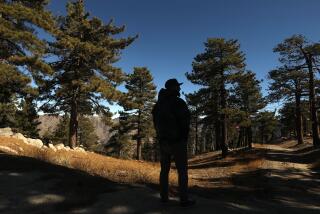Yosemite Valley: Will a new plan make room for people and conservation?
El Capitan isn’t going anywhere and neither is Bridalveil Fall, but a lot of the man-made structures on the floor of Yosemite Valley will be shifted around under the final version of the National Park Service preservation plan for the Merced River. The plan, which will be reviewed at a public meeting on Thursday, does a far better job of preserving recreational activities in the valley than the draconian draft from a year ago that would have banned such environmentally friendly pastimes as bicycle and raft rentals.
The Park Service was ordered to make changes after conservationists successfully sued, claiming that the Merced, designated as wild and scenic, was not being preserved in the manner required under the law. In addition to restoring riparian habitat, the plan preserves some iconic park amenities, such as the popular skating rink, but for the most part favors those activities that are in keeping with the idea that what truly matters about the park is its natural beauty.
To preserve the river, man-made structures within a quarter-mile of the Merced would be moved. But there is too little space on the rest of the valley floor for all the popular structures and activities to be relocated. The valley is already overdeveloped, with cars jammed along the roads — parked or hunting for parking. Structures are packed together.
Horse rentals will still be available under the preservation plan, but in a different location. Bike and river-raft rentals will continue in the valley, but the rental facilities will be moved farther from the river. The ice skating rink also will be moved farther from the river. All of these businesses would have been banished under the previous plan, along with a historic stone bridge that now will remain. Some new campsites will be added, and the number of visitors at any time will be capped at about 20,000. There is currently no cap, but the new maximum is about the same as the number of visitors on the valley’s busiest days. To further discourage crowding, parking along the sides of the roads will be prohibited.
The plan isn’t perfect. An even less crowded valley floor would have been preferable; during the summer, Yosemite Valley sometimes looks more like a concession-littered amusement park than one of the world’s most revered nature spots. It would have reduced clutter to locate the new campsites in less-crowded parts of the park; there are other locations with vistas of waterfalls and Half Dome. The visitor cap should be lower, and the skating rink should have been moved outside the valley. These changes would also encourage people to leave the valley’s asphalt walkways and take in the less-visited wonders of the park.
But the Park Service was under pressure from the public and some politicians to keep maximizing its concessions. Given the lobbying from both sides, the service did a good job of balancing tourism with conservation.
More to Read
A cure for the common opinion
Get thought-provoking perspectives with our weekly newsletter.
You may occasionally receive promotional content from the Los Angeles Times.










